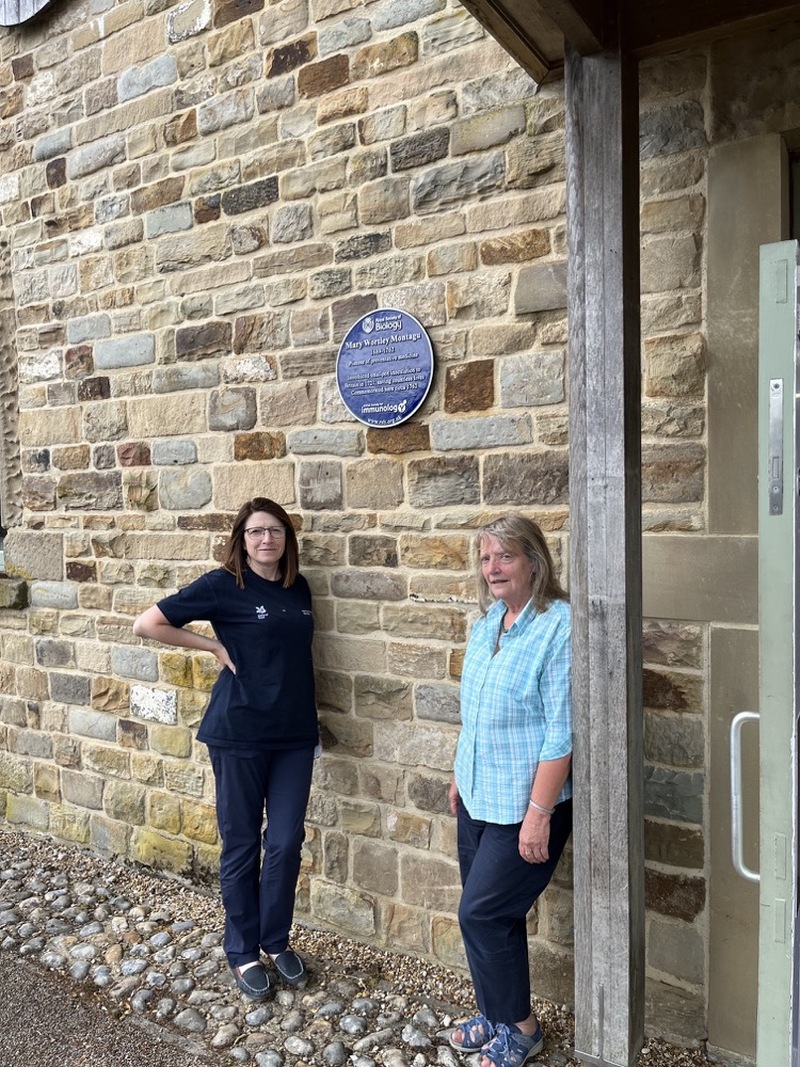THE latest in a long line of blue plaques - fitted onto Barnsley buildings to celebrate the accomplishments of acclaimed individuals who achieved significant feats in their lifetime - will be unveiled to the public tomorrow. Josh Timlin delved into the life of Lady Mary Wortley Montagu.
Born in 1689, Lady Mary Wortley Montagu was an English aristocrat but more importantly rose to prominence by being responsible for the introduction of the smallpox inoculation to Britain.
Simply put, she pioneered the prevention of severe illness and death due to smallpox in Britain - just years after losing several relatives to the disease and overcoming it herself in 1715 - and her work saved the lives of many at a time when the hugely contagious illness rampaged through communities.
This medical breakthrough - which she promoted widely, often being met with denunciation - was the first time in western medicine that antibodies were created to secure immunity from disease.
What we now call ‘inoculation’ to differentiate it from the modern process of vaccination, invented by Edward Jenner at the end of the 18th/ century, had been used for centuries in China, India, the Middle East and Africa.
It involved scratching the skin to introduce a tiny amount of pus taken from someone with a mild form of smallpox into the subject’s bloodstream.
When carried out carefully, it usually provoked a form of the disease which in most cases quickly passed, leaving lasting immunity, and word quickly spread.
However, it wasn’t a smooth-sailing journey for Lady Mary, with many detractors being encountered along the way, not least her own sister who refused to inoculate her immediate family members.
But where does Barnsley come into the equation? And why was Wentworth Castle, which proudly stands in its beautiful Stainborough grounds, chosen as the place to install the blue plaque?
Lord and Lady Strafford, of Wentworth Castle, were neighbours of Lady Mary in Twickenham, near London, and appear to have been ‘early adopters’ and probably had all their four children treated.
The youngest of these was William, who inherited the Wentworth Castle estate as the Second Earl of Strafford in 1739, and even commissioned a tribute - called The Sun Monument, which still stands in its gardens - in her honour.
So, despite being born in Nottingham and spending much of her time in London before she died at the age of 73 in 1762, Wentworth Castle is a hugely befitting place for the latest in a string of local tributes to Lady Mary.
The blue plaque will be the 19th to be installed in Barnsley, following other notable people including James Hudson Taylor, Joseph Bramah, Brian Glover, Joseph Locke and Barry Hines.
Dr Lynda Partridge, chair of the Royal Society of Biology’s Yorkshire branch, urged people to attend tomorrow’s unveil, which will begin at 1pm.
“This event will mark the formal unveiling of a blue plaque, recently placed on the Long Barn at Wentworth Castle Gardens to celebrate the achievements of Lady Mary Wortley Montagu.
“Lady Mary pioneered the prevention of severe illness and death due to smallpox in Britain by introducing the practice of inoculation, some 70 years before Edward Jenner began vaccination against this disease.
“This plaque has been installed with support from the Royal Society of Biology and the British Society for Immunology.
“The association of Lady Mary with Wentworth Castle Gardens relates to The Sun Monument, which has commemorated her achievements here since about 1762.
“The gardens are now run by the National Trust, in partnership with Northern College who occupy the mansion house, and Barnsley Museums.
“It will also include talks from historians and immunologists.”
Dr Lynda Partridge, chair of the Royal Society of Biology’s Yorkshire branch, urged people to attend tomorrow’s unveil, which will begin at 1pm.
“This event will mark the formal unveiling of a blue plaque, recently placed on the Long Barn at Wentworth Castle Gardens to celebrate the achievements of Lady Mary Wortley Montagu.
“Lady Mary pioneered the prevention of severe illness and death due to smallpox in Britain by introducing the practice of inoculation, some 70 years before Edward Jenner began vaccination against this disease.
“This plaque has been installed with support from the Royal Society of Biology and the British Society for Immunology.
“The association of Lady Mary with Wentworth Castle Gardens relates to The Sun Monument, which has commemorated her achievements here since about 1762.
“The gardens are now run by the National Trust, in partnership with Northern College who occupy the mansion house, and Barnsley Museums.
“It will also include talks from historians and immunologists.”


























